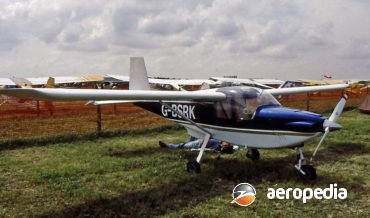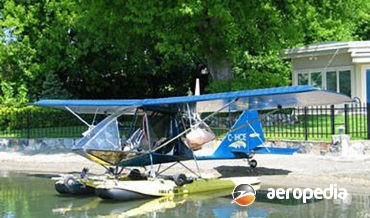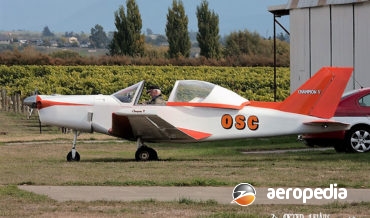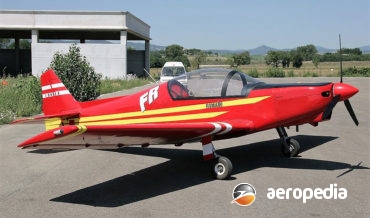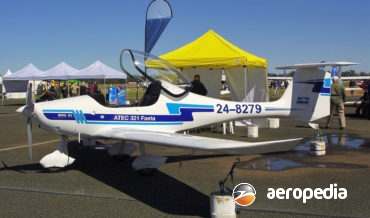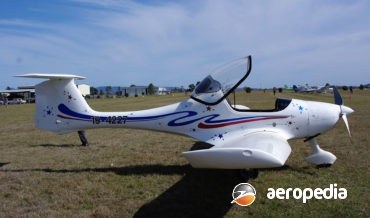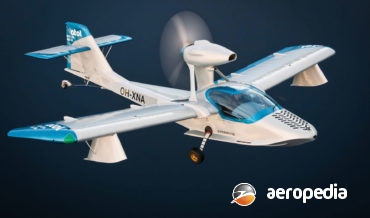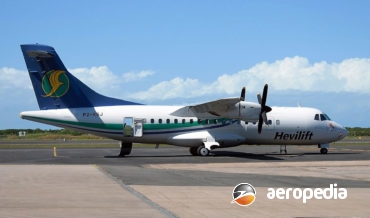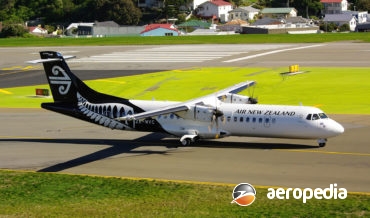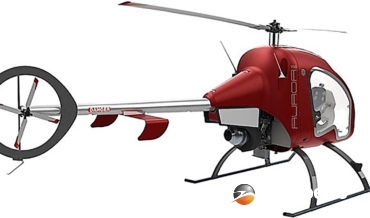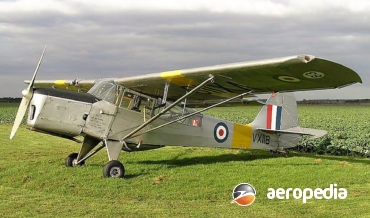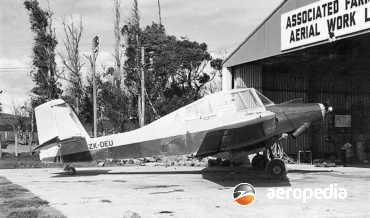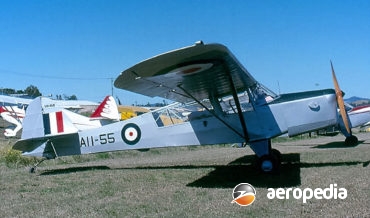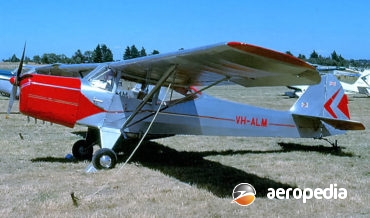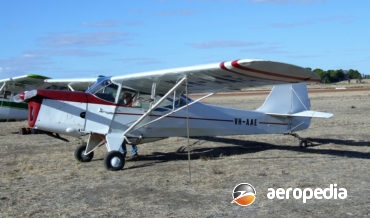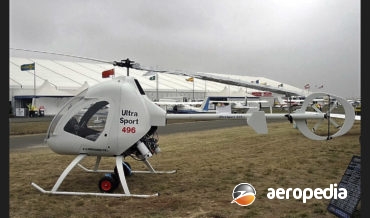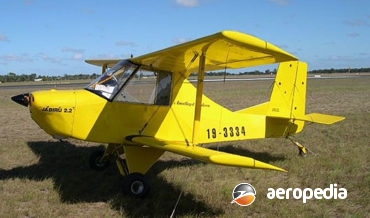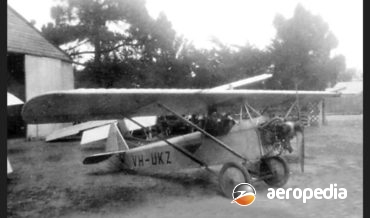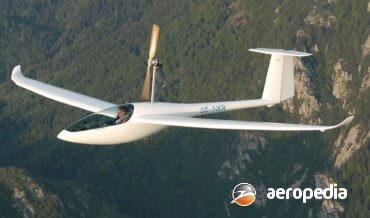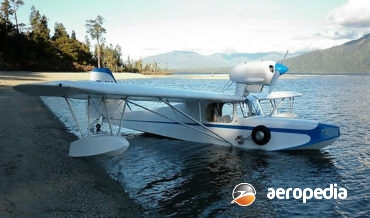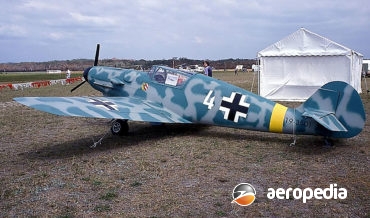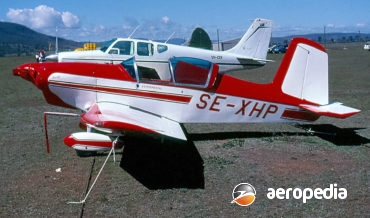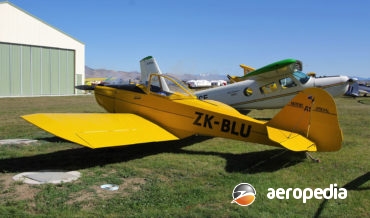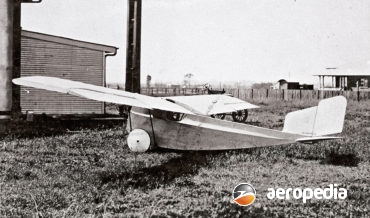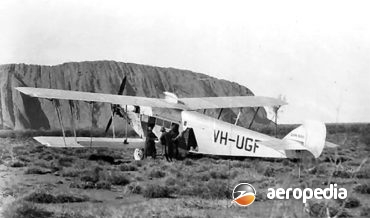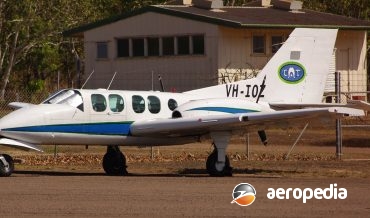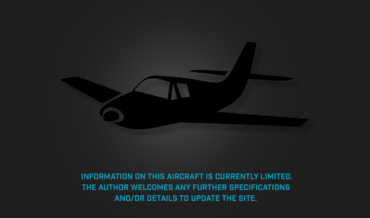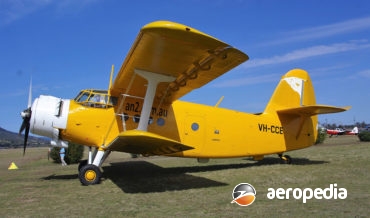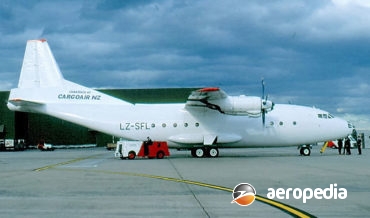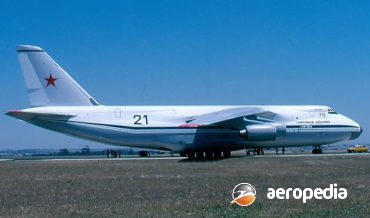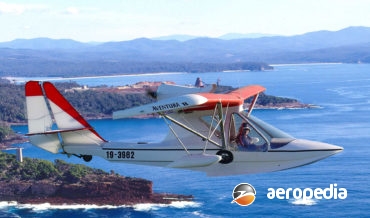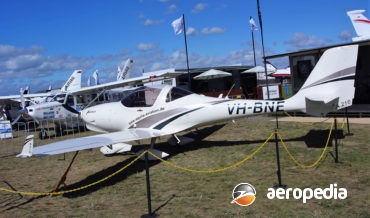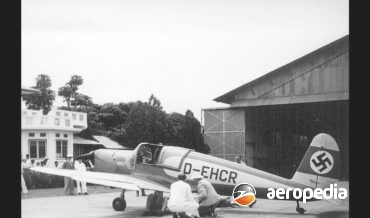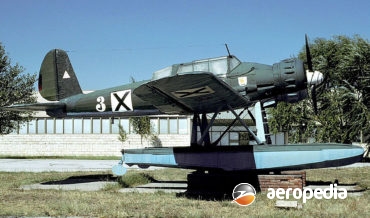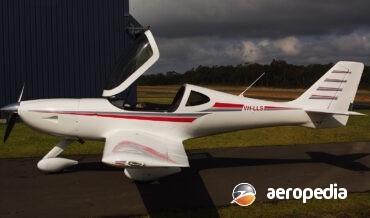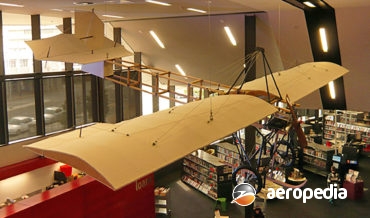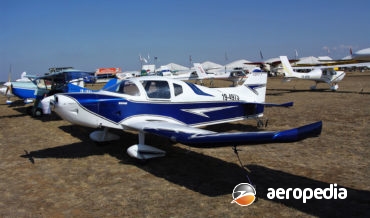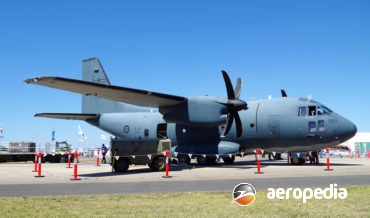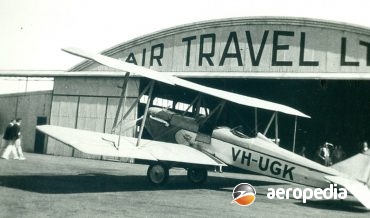David C. Eyre
The ARV Super 2 was a new design using state of the art technology to produce a light, cheap, economical training aircraft to meet the requirements of aero clubs, and was expected to compete on the world’s markets with the French designed Robin ATL.
David C. Eyre
- May 8, 2019
The Chinook series of light aircraft was produced at Vernon, British Colombia, in Canada by Aircraft Sales & Parts, and more than 900 examples have been produced and sold around the world.
David C. Eyre
- May 8, 2019
The Champion V is one of a series of light aircraft designed in Italy by Guiseppe Vidor, the first of this model making its first flight in 1995.
David C. Eyre
- May 8, 2019
The Whisky IV is a two-seat in tandem, low-wing light sporting monoplane designed by Guiseppe Vidor.
David C. Eyre
- May 8, 2019
The 321 Faeta was designed in the Czech Republic as an ultralight and light-sporting aircraft and is produced at the company’s facility at Libice Cidlinou.
David C. Eyre
- May 8, 2019
The Albatross is one of the new breed of light efficient aircraft available on the market and it has been imported into Australia by Albatross Aviation in Queensland. It has a composite fuselage of fibreglass reinforced by wooden bulkheads and frames.
David C. Eyre
- May 8, 2019
The Atol series of light amphibians was designed bv Markku Koivurova in Finland and was initially produced by Marteno Ky, production later being taken over by Atol Avion Ltd.
David C. Eyre
- May 8, 2019
The ATR-42 was one of a new generation of commuter airlines designed to meet commuter airline requirements and incorporated the latest technology in the field in the design of the aircraft and the engine.
David C. Eyre
- May 8, 2019
Following the success of the ATR-42, development proceeded to the ATR-72, which was launched in January 1986.
David C. Eyre
- May 8, 2019
At Te Kowhai, New Zealand in October 2011 at an event described as New Zealands “first air innovation show” Auroa Helicopters Ltd (New Zealand) Industry Manufacturing of South Taranaka announced it was developing a new two-seat helicopter powered by a 119-kw (160-hp) T-62 turbine engine.
David C. Eyre
- May 8, 2019
Following the retirement of a number of Auster AOP.6 aircraft from military service in 1959 after the introduction into British Army service of the AOP.9, many of the survivors were obtained by Auster Aircraft Ltd for conversion for civil use and re-sale.
David C. Eyre
- May 8, 2019
The Auster AOP-9 was designed specifically for the British Army Air Corps as an air-observation-post aircraft to replace previous Auster variants which had been civil designs converted to fill that role.
David C. Eyre
- May 8, 2019
The Agricola agricultural aircraft was designed by the chief designer of Auster Aircraft Ltd, R E Bird, in the 1950s following a tour he made of New Zealand to examine the requirements of agricultural operators.
David C. Eyre
- May 8, 2019
The Auster series was initially derived from the Taylorcraft Model D series and was built for the British Army for the air-observation-post role.
David C. Eyre
- May 8, 2019
During the latter stages of World War II the Taylorcraft design team decided to build a lower powered version of the Auster Mk 5 and a prototype, originally known as the Taylorcraft Auster Mk 5 Series J-1 Autocrat, was built and flown.
David C. Eyre
- May 8, 2019
Introduced in 1950, the prototype J-1B Aiglet was a converted Autocrat with a Gipsy Major 1 engine and a larger horn-balanced rudder.
David C. Eyre
- May 8, 2019
American Sportscopter Inc of Newport News, Virginia, developed a series of light helicopters for homebuilt construction, being supplied in kit form.
David C. Eyre
- May 8, 2019
Designed by Eric Whitney to CAO 95.10 in the mid 1990s, the Falcon is a single-seat light sporting aircraft powered by a Rotax 503 engine, but larger engines in the Rotax and Jabiru range may be installed.
David C. Eyre
- May 8, 2019
In 1929 the Pratt brothers at Geelong near Melbourne commenced work on a light aircraft known as the Amsco monoplane at the Workshops of AMSCO at Belmont Common in Victoria initially along the lines of a Heath parasol.
David C. Eyre
- May 8, 2019
The Apis Is A Light Amateur Built Powered Glider Built In Slovenia.
David C. Eyre
- May 8, 2019
The EA-1 Kingfisher was designed by Earl Anderson, a Boeing 747 airline captain, in the USA. The fuselage was constructed of wood, covered with plywood and coated with fibreglass.
David C. Eyre
- May 8, 2019
William ‘Willy’ Andiel was involved in the design and development of a number of ultra light aircraft, numbering some 18 designs, and examples built by him and others known to have been completed are mentioned here and elsewhere in this tome.
David C. Eyre
- May 8, 2019
In November 1942 Bjorn Andreasson (1917 – 1993) formed AB Flygindustri at Halmstad in Sweden and over the years designed a number of aircraft, the first being known as the Fi-1.
David C. Eyre
- May 8, 2019
The Andrews A-1 is considered to be the pioneer of post-war amateur-constructed aircraft in New Zealand, being built to Certificate of Airworthiness standard during the 1950s by C G Andrews of Wellington, who was then an aeronautical engineer employed by the New Zealand Civil Aviation Department.
David C. Eyre
- May 8, 2019
The ANEC series of monoplanes, of which three were built in the United Kingdom, was designed by W S Shackleton and built by Air Navigation & Engineering Co Ltd (ANEC) at Addlestone in Surrey and was probably the earliest light aircraft designed and built in Great Britain.
David C. Eyre
- May 8, 2019
In 1921 the Larkin Aircraft Supply Co Ltd placed an order with Handasyde Aircraft Co Ltd, and design of the aircraft was carried out, and the aircraft completed, by Air Navigation and Engineering Co Ltd of Adddletone, Surrey, the order being for the construction of a four passenger and mail
David C. Eyre
- May 8, 2019
The Angel is a twin-engine light transport produced in Orange City, Iowa by Angel Aircraft Corporation fitted with two Lycoming IO-540 engine driving Hartzell propellers in a pusher configuration.
David C. Eyre
- May 8, 2019
Maxwell Angwin of Essendon, VIC was a dental mechanic who designed and commenced construction of a parasol wing single-seat light aircraft looking similar to a fighter aircraft designed and built in Poland by PZL.
David C. Eyre
- May 8, 2019
Designed originally for agricultural duties under the designation SKH-1, the AN-2 “Colt” was built in large numbers, 5,450 being built in the Soviet Union alone between 1948 and 1960, and 11,625 built under licence in Poland by the PZL Mielec concern before production ceased in the early 1990’s. The first
David C. Eyre
- May 8, 2019
In 1955 the famous Soviet Design Bureau, Antonov, commenced designed of a four-engine turboprop passenger transport, which became known as the An-10 Ukraina, and which flew for the first time in March 1957.
David C. Eyre
- May 8, 2019
Development of the AN-124 Ruslan (NATO code-name Condor) began in 1977 in Kiev, in the Ukraine, the Antonov design Bureau team being headed by Petr V Balabuev. The prototype, powered by four Lotarev high-by-pass turbofans flew for the first time on 26 December 1982.
David C. Eyre
- May 8, 2019
The Adventurer series of light amphibians was originally designed by Highcraft Aero-Marine as the single-seat XL280, which was developed into the XA280 with sponsons on its outer wing panels and a fibreglass reinforced hull.
David C. Eyre
- May 8, 2019
The Aquila A-210 is a two-seat light sporting and training aircraft produced by Excellence AG at Schonhagen and is fitted with a 75-kw (100-hp) Rotax 912S3 engine driving a MT two-blade hydraulic constant speed propeller, and is described as a roomy and comfortable aircraft with good ergonomics.
David C. Eyre
- May 8, 2019
In 1937 Dipl Ing Walter Blume designed the Ar-79 high-performance two-seat cabin touring monoplane, the prototype of which, the Ar 79A (D-EKCK) set a new 1,000 km (621 miles) record in its class by averaging 229.04 km/h (142.32 mph).
David C. Eyre
- May 8, 2019
The Ar 196 was designed as a two-seat low-wing reconnaissance floatplane in 1937 for operation from German Navy (Kriegsmarine) warships and was built at the Arado Flugzeugwerke at Warnemunde.
David C. Eyre
- May 8, 2019
The Lightning is an ultra-light sporting monoplane produced in kit form by Arion Aircraft of North Shelbyville, Tennessee, the prototype (N233AL) flying for the first time on 3 March 2006, the first customer-built aircraft (N430GH) being flown on 19 April that year.
David C. Eyre
- May 8, 2019
The Albury monoplane was a light aircraft designed and built in Albury, NSW by Messrs Azor D Robbins and Alex W Porter, two young men aged 21.
David C. Eyre
- May 8, 2019
The Alca 2 is a timber and foam composite construction two-seat light aircraft designed and developed by its owner - builder Albert Cassar in Australia and is similar externally to the Jodel D-11 and Falconar F12 series.
David C. Eyre
- May 8, 2019
In 1962 NATO issued a specification for a V/STOL transport but no contract was awarded. However, the Italian Air Force ordered two prototypes plus a ground-test airframe in 1968 from the Italian manufacturer, Fiat Aviazione, the prototype flying for the first time on 18 July 1970, and a contract was
David C. Eyre
- May 8, 2019
The Eaglerock series of light aircraft was manufactured by the Alexander Aircraft Co, a division of Alexander Industries of Denver, Colorado.
David C. Eyre
- May 8, 2019
Recent Comments
Archives
Categories
- No categories
Categories
- No categories
Latest Posts
Newsletter

